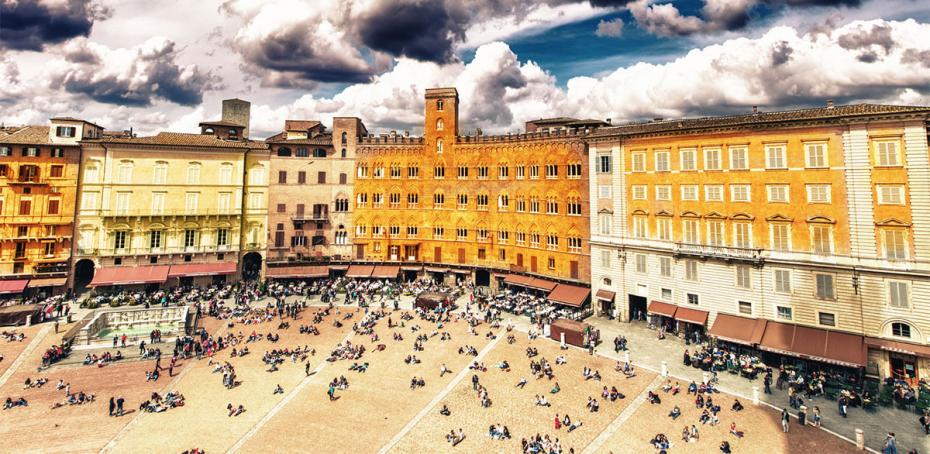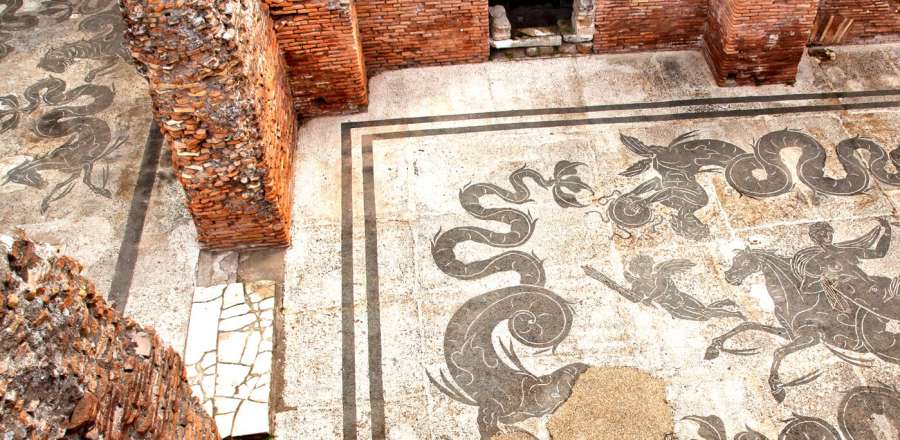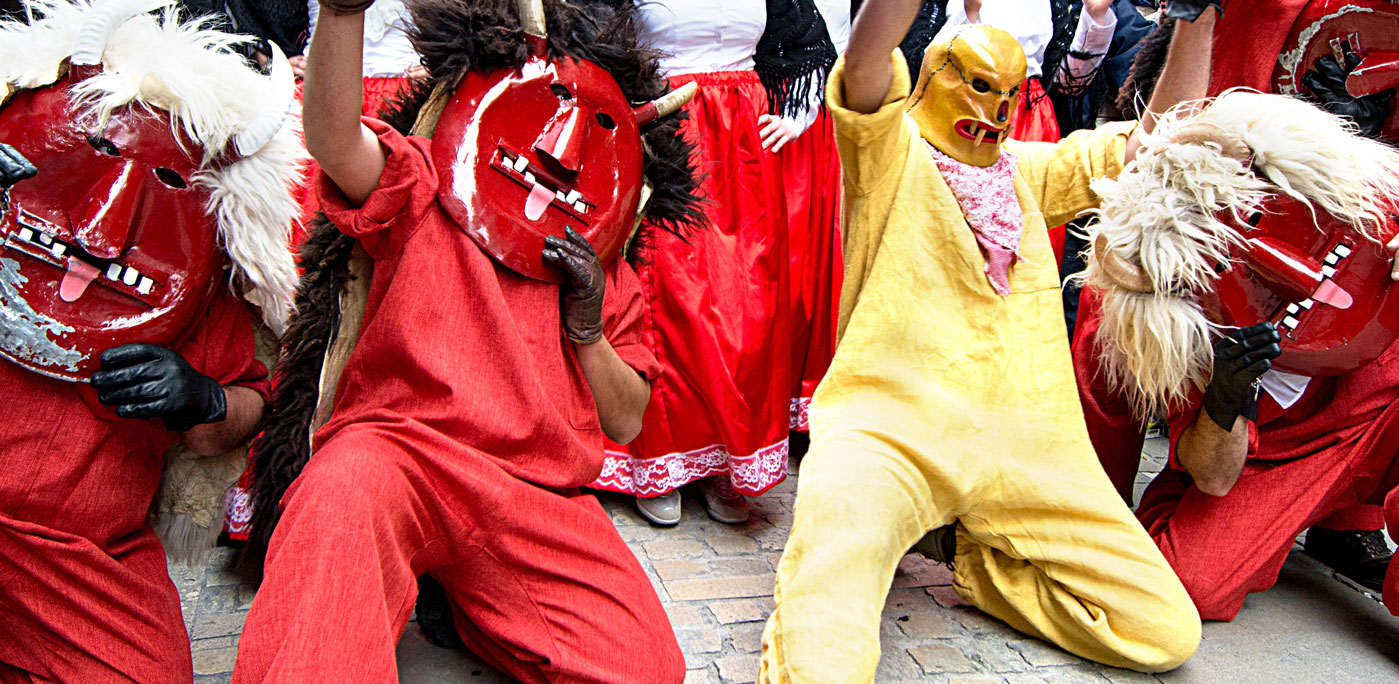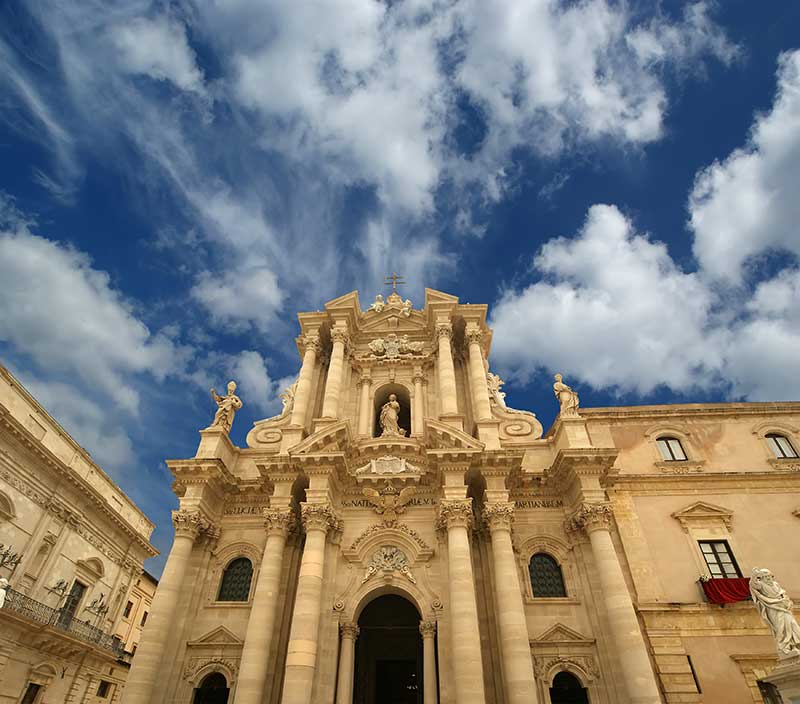The gated city of Siena is unique for many reasons. It was one of Italy’s first democracies. It is the site of the historic Palio di Siena horse race. And UNESCO describes its gothic architecture and narrow streets as the very embodiment of a medieval city. But, for many, their favorite spot is unquestionably its main square, the glorious Piazza del Campo. So what is it that makes this sun-kissed Tuscan piazza the most beautiful in Italy?
Arriving in Siena
Photographs of Siena are extremely evocative of the typically Tuscan hilltop city but nothing quite prepares visitors for the real thing. And whether you arrive on foot, by bus, train or taxi the first point that strikes you is the maze of one-way streets and towering palazzi. The historic city sprawls across three Tuscan hills, surrounded by high, fortified walls pierced by 12 enormous wooden gates. It’s a truly wonderful medieval citadel. And like an oyster, Siena has something very precious at its center, a pearl of Tuscan architecture and civic pride born from simple beginnings; the unrivalled beauty of the Piazza del Campo.
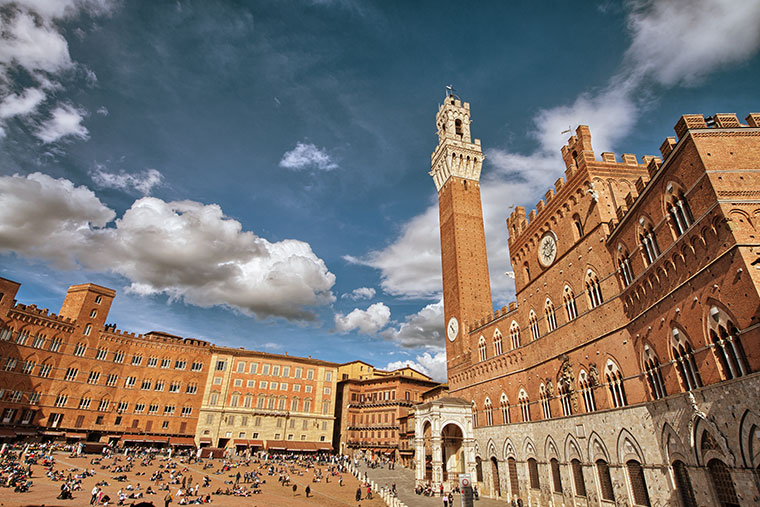
Piazza del Campo
The Piazza del Campo or Il Campo meaning “the field” has been at the spiritual, geographic and civic heart of the city for centuries, although not, as some suggest, as far back as the Romans who once settled here. The site was once nothing more than fields at the crossroad meeting point between three hilltop communities that went on to form the city – Castellare, San Martino and Camollia. It was a place for fairs, tournaments, bull races and markets where farmers and traders could sell their wares. And today it sits proudly at the center of the city as a sultry suntrap, social club and stunning focal point for all Senese life.
The formal Piazza that you see today first began to take shape when the commune of Siena began to buy up fields from landowners in the late 1200s, gathering together a space large enough to hold the entire population of 50,000 people. The aim was to form a public piazza that belonged to everyone. And if you’ve ever visited Siena you know how successful their town planning proved to be shaping the piazza into one of the most acclaimed public spaces in Italy.
On the face of it the Campo may look quite understated for an Italian piazza but in fact it’s packed with meaning and beautiful symbology.
The gently sloping and uniquely fan, shell or cloak shaped Campo celebrates the Virgin Mary. The utilitarian herringbone brick paving, laid out in 1349, mirrors the typical Siena-red brickwork of the city’s palaces and houses. And if you look closely, you’ll notice that the paving is subtly divided into nine equal sectors by white travertine limestone bands tapering down towards the gothic Palazzo Pubblico. But rather than representing the districts of the city, the sectors symbolize the democratically elected Council of Nine, or the Noveschi, who governed at the height of the city’s republic in the 1300 and 1400s.
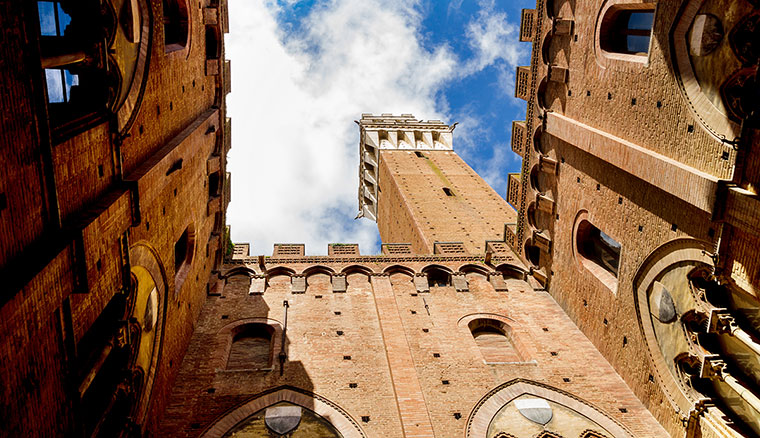
The towering Torre del Mangia next to the town hall is the tallest building in the Campo and the third tallest secular tower in medieval Italy. Built in 1348, it matches the height of the Duomo quietly signaling that the Senese state and church are equal. It takes its name from the original bell ringer who was renowned for his gluttony and nicknamed Mangiaguadagni or “profit-eater.” And the tower acts not only as a literal timekeeper but also as a massive sundial as its shadow quietly ticks across the Campo each day from the misty morning to the sultry summer sunset when the piazza finally falls into total shade.
Next to the tower stands the proud Palazzo Pubblico built at the same time as the Campo to house the republic’s democratic government and Council of Nine. The two-tone stone and brick palace repeats the Siena-red coloring and gently reflects the curve of the campo with a subtle gothic crenulated design. It’s a wonderful piece of civic architecture but is particularly acclaimed for its internal frescoes depicting Good Government and equality long before the rest of Italy or Europe took up the themes.
Completing the ring of buildings around the Campo is a number of noble palaces; the palazzi signorili. Today many house restaurants, shops and bars but originally they were the homes of some of Siena’s nobles. And if this were any other Tuscan town, you’d expect the families to have been competing to build the fanciest, most expensive, tallest homes as in Lucca or San Gimignano. But this is Siena where they do things differently, they do things beautifully and co-operatively.
In fact, Siena’s historic principals of equality are laid down in a statue specifying that buildings should not stand out beyond one another, but should be arranged equally to create the greatest beauty for the city. The effect is an architectural harmony that traverses the entire piazza. Palaces are built from Senese red brick, of similar height and all with a delicate style and beauty that continues across the city to great effect. It’s a truly beautiful sight.
Ultimately the Piazza del Campo is a wonderfully harmonious spot architecturally, symbolically and philosophically. Its design incorporates Siena’s early principles of democracy, equality and co-operation into aesthetically beautiful facades and paving. And its inhabitants live the Senese way, collaborating to create a well-balanced and attractive environment where the entire city can meet to socialize, celebrate and compete. It’s a modern and medieval focal point of city life; a playground, marketplace and social center that belongs to everyone. It is truly beautiful.
